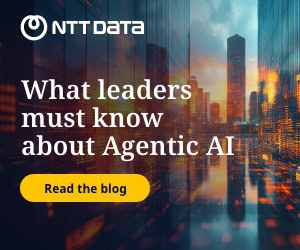The latest findings from Rapid7's Q3 2025 Threat Landscape Report illuminate a concerning shift in the cyber threat landscape, highlighting the increasing sophistication of ransomware groups and the weaponisation of artificial intelligence (AI) in cyberattacks. As vulnerabilities continue to be exploited at unprecedented speeds, organisations must adapt their cybersecurity strategies to mitigate emerging risks.

Rapid7's chief scient Raj Samani, remarked, “Ransomware has evolved significantly beyond its early days to become a calculated strategy that destabilises industries.”
He emphasises that modern threat actors operate like shadow corporations, consolidating infrastructure and utilising public relations strategies to enhance their influence and erode public trust swiftly.
This alarming evolution transforms ransomware from a mere nuisance to a genuine threat, impacting not only financial institutions but also critical sectors such as healthcare and manufacturing.
The report reveals a 21% decrease in the number of newly exploited vulnerabilities from Q2 to Q3. However, this decline comes with a troubling twist—adversaries are focusing on older vulnerabilities, with some exploit paths dating back over a decade.
The exploitation of CVEs, such as CVE-2025-53770 affecting Microsoft SharePoint, signifies a narrowing window between the disclosure of vulnerabilities and their weaponisation in active attacks.

Christiaan Beek, senior director of threat intelligence and analytics, states, “The moment a vulnerability is disclosed, it becomes a bullet in the attacker’s arsenal.” This perspective forces defenders into a proactive stance, requiring immediate and decisive action upon vulnerability disclosure.
Additionally, the report highlights the significant rise in ransomware activity, with the number of active groups surging to 88, up from 65 in the previous quarter. New alliances between groups such as Qilin, SafePay, and WorldLeaks are driving innovation in attack strategies.
These collaborations target high-risk industries and employ techniques like fileless operations and single-extortion data leaks. Affiliate models are also emerging, where experienced members assist junior affiliates in ransom negotiations, creating a shared economy of cybercrime.
The incorporation of generative AI is another critical area of concern. This advancement has lowered the barriers for creating sophisticated phishing campaigns, allowing attackers to develop convincing social engineering strategies with ease.
Tools like LAMEHUG illustrate this trend, enabling adaptive malware to generate new commands dynamically in response to environments. Such advancements highlight the evolving nature of threats, requiring organisations to rethink traditional defence mechanisms.
State-sponsored actors from nations such as Russia, China, and Iran are refining their tactics, intentionally blurring the lines between espionage and disruptive attacks. Targeting supply chains and identity systems, these actors are emphasising stealth and persistence, necessitating a robust strategy that integrates detection, response, and recovery.
For CISOs in Asia, the report underscores the urgent need for organisations to maintain a vigilant posture, ensuring they not only patch vulnerabilities promptly but also assess their entire security architecture in light of evolving threats.
As the cyber landscape continues to morph, leaders must prepare for a future where adaptability, proactive threat management, and strategic alliances define success.



